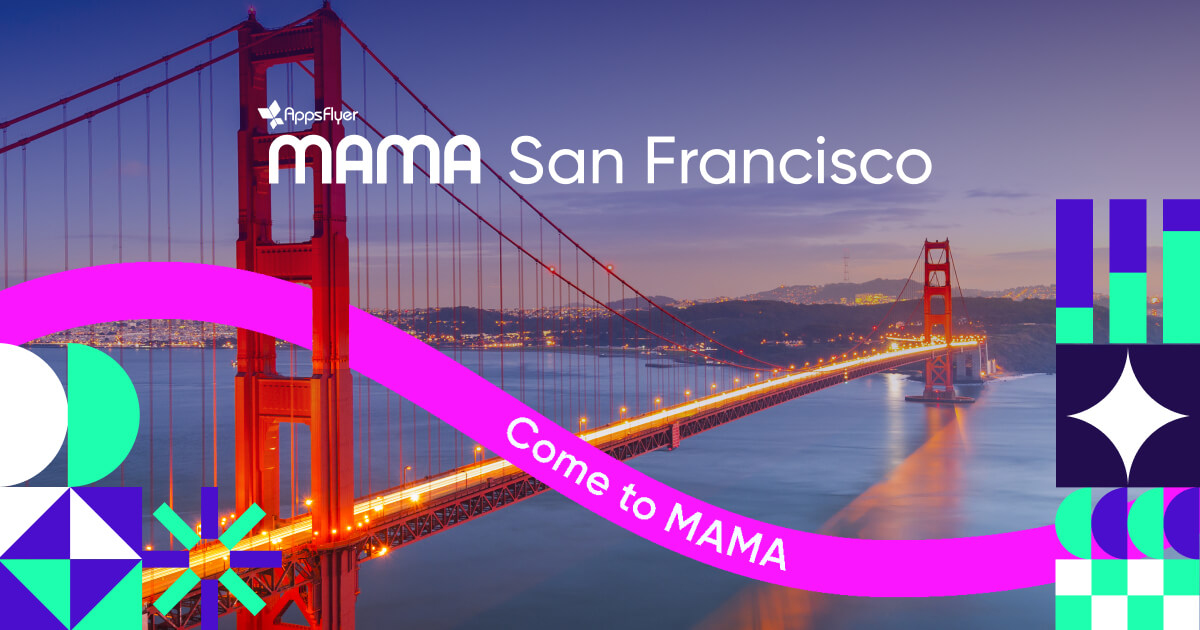
The beginners guide to custom product pages
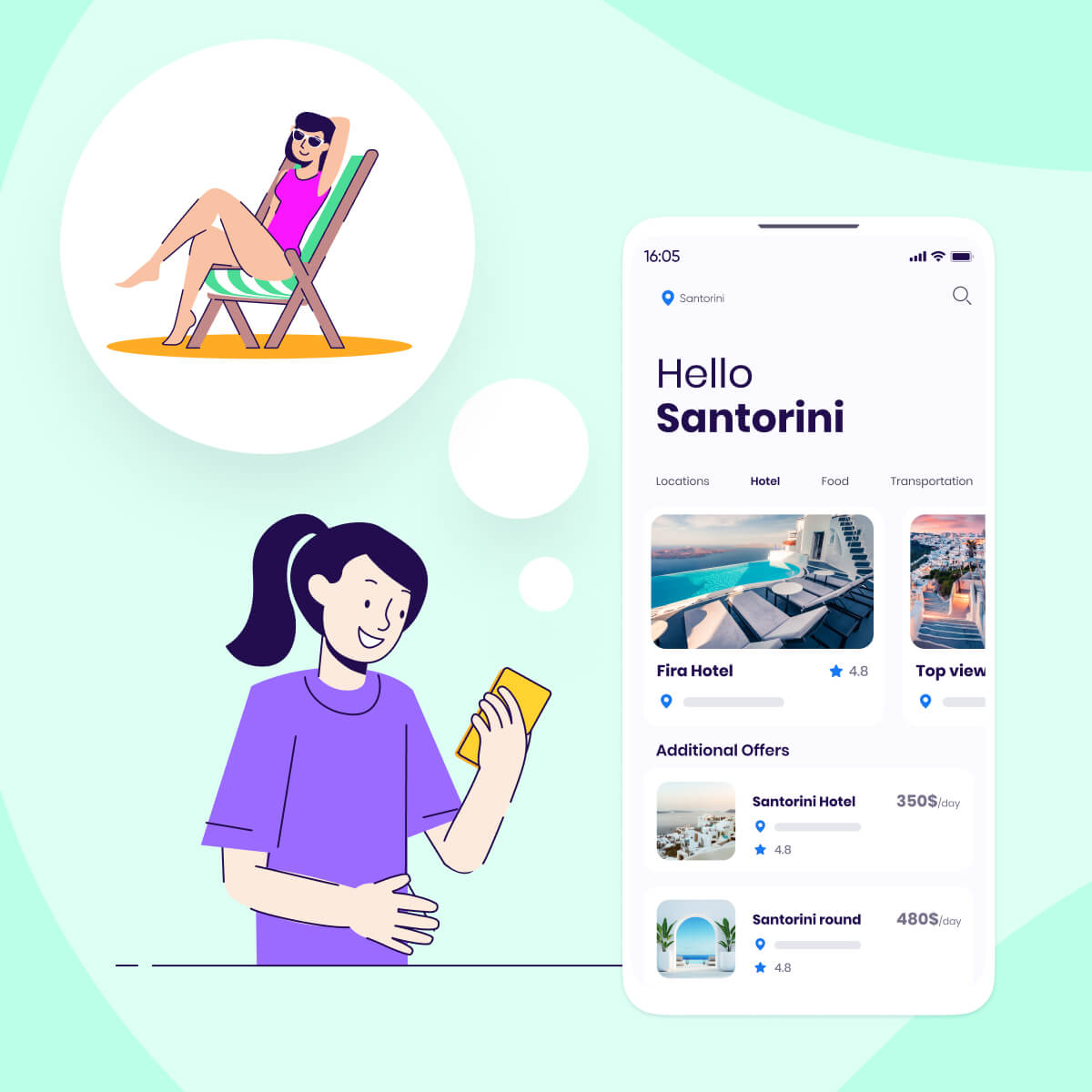
As an app marketer, have you ever felt frustrated by the lack of conversion rate optimization (CRO) features and capabilities in the Apple ecosystem? You know you need to tailor your messaging to your audience, and keep testing what works best, if you’re going to get those all-important downloads. But iOS hasn’t always made it easy.
For a long time, you could only have one static product page on the App Store, and all your paid and organic traffic led there. In other words, you had no custom content for specific audience segments, keywords, or promotions.
Well, Apple finally changed all of that when it introduced custom product pages. This new feature lets marketers design up to 35 different versions of the product page for advertising purposes and three organic variations of the page. Want to learn how to take advantage of this new CRO feature and boost your downloads? Read on.
What are custom product pages?
Custom product pages (CPPs) allow app owners to create unique and personalized product pages for their apps. This new feature was introduced as part of the iOS 15 launch in December 2021.
App owners can now build custom landing pages for apps with images and videos and provide more detailed information about their app’s features and content. These capabilities help potential customers better understand the app before downloading it, which can result in higher conversion rates.
Even better, you can customize your default app store product page and make up to 35 variations by editing promotional images, text, and videos. This means you can make your messaging more relevant and engaging for different audience segments. Each page gets its own URL that you can use for specific ads and advanced targeting.
The connection between CPPs and Apple Search Ads
Apple Search Ads (ASA) is a tool that lets you effectively promote your app and increase its visibility in the App Store. By using ASA, you can take advantage of CPPs to attract more potential customers and deliver tailored messages about your product to the right users.
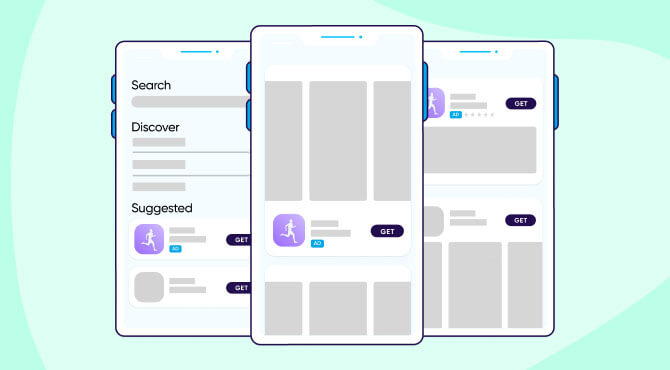
For example, you can create custom product pages to showcase your app’s best features, or highlight new updates or content that make it stand out from the competition. You can also use them to reach certain user segments with personalized messaging that increases conversion rates.
CPP vs. PPO
Product page optimization (PPO) is an essential part of any successful App Store Optimization strategy. Optimizing your product page will increase conversions by providing accurate, easy-to-access information about the app and its features.
On the other hand, custom product pages focus more on creating visual elements, such as videos and images, that help your ideal customers understand what your app offers before downloading it.
Advantages and disadvantages of custom product pages
If you want your app to stand out from the crowd and get more downloads, then creating custom product pages can give you:
- More testing opportunities, through engaging visuals such as videos or images
- Improved relevance and conversion for ad campaigns
- Better audience segmentation
- Potential to increase sales and return on ad spend (ROAS)
- A long-awaited introduction of CRO into app marketing
However, there are also some disadvantages associated with creating custom product pages. Here are a few things to watch out for:
- They require additional time and design resources.
- It can be a challenge to get enough data to reach statistical significance on tests.
- It’s hard to know where the conversions came from (your paid or your organic efforts).
How do custom product pages impact ASO?
Custom product pages are about to change the world of ASO (app store optimization) and user acquisition forever.
You’ll see an uptick in organic traffic thanks to the ability to create three new product page variations, which will appear based on the search query and the user.
On the paid user acquisition front, CPPs will let you create up to 35 different pages. Some of that targeted traffic will likely boost your organic ASO efforts.
When and how do you use custom product pages?
There are various ways you can strategically use custom product pages as part of your app marketing efforts — let’s take a look at the most popular ones.
Highlight specific promotions or seasonal events
You can use custom product pages for promotional events, holidays, and seasonal events. For example, recipe apps can create pages around Thanksgiving or Christmas with specific screenshots, videos, and keywords related to each holiday.
Create custom product pages for specific audiences
Another great way to use CPPs is tailoring them to specific audiences. For example, online education provider Khan Academy wants to attract teachers, parents, and students. Creating a separate custom page for each audience can bring more engagement and downloads for each demographic.
Make custom product pages for diverse marketing channels
You can create these pages for all the different marketing channels you have. For example, you can make separate pages for your Snapchat, TikTok, YouTube, and Instagram audiences. You can further narrow it down to paid versus organic traffic from those channels.
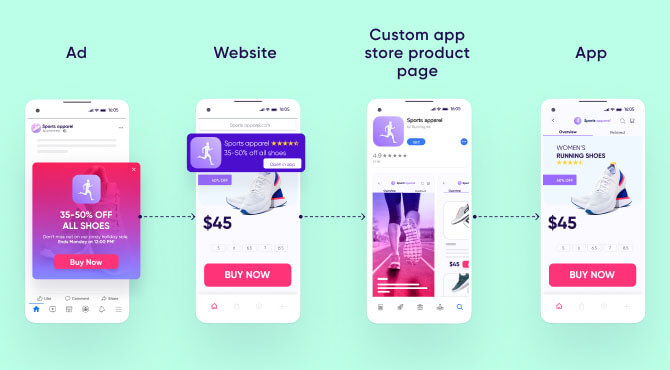
Generate custom product pages for keywords
Custom product pages help apps get granular with their targeting. You can literally build these pages around specific keywords — or a set of keywords — and target particular searches.
Showcase specific products and features
CPPs make it much easier to highlight specific functionality for different audiences. You can create a new page for each new feature you launch or major update you make to the app. You can also create pages for your app’s different user groups. Going back to our Khan Academy example, you can have different pages for each type of class you offer — math, science, English, and so on.
Connect with returning users
Another powerful benefit of CPPs is the ability to connect with your returning users. You can delight them with customer product pages highlighting new features and showing content that’s personalized to their last interaction with your app.
Key steps to set up and configure custom product pages
Step 1 — Choose your app
First, go to “My Apps” and pick the one that will get a custom product page. Make sure you select the right one and remember that you can create a maximum of 35 custom pages for each app.
Step 2 — Develop a custom product page
It’s time to create the page. Navigate to the left sidebar and select “Custom Product Pages”. Make a new one, and remember to give it a unique name. You can stay organized by naming your CPPs after a specific audience segment or campaign that you’ll be running.
Step 3 — Start from scratch or edit an existing page
Now decide whether to create a blank page or work with an existing one. To edit a pre-existing page, you can find the right version under the “Prepare for Submission” or “Ready for Sale” states. Finish the process by clicking “Create” and generating both the CPP and its unique URL.
Step 4 — Add visual elements
Now it’s time to add all your creative assets to the page. You can make several modifications, like updating the app review, tweaking the promotional text, and adding screenshots. Adjust the visual elements until you have the perfect version of your CPP.
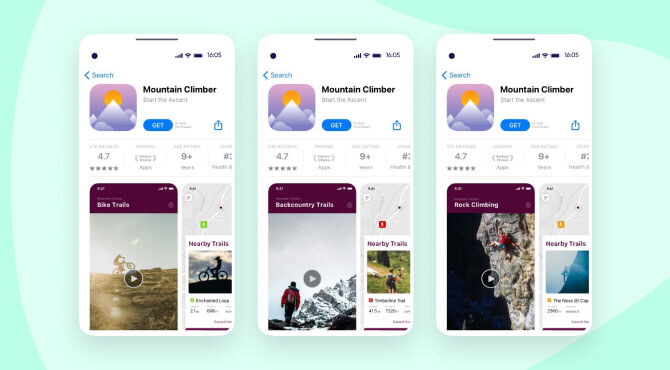
Step 5 — Submit for review
After you’ve designed the page, hit “Add to Review” at the top right-hand corner. Then click “Confirm” on the notification that appears to submit your CPP for review.
Step 6 — Edit
Even after approval, you can go back and edit your page at any time without affecting its original unique URL. Just remember that any changes made at this stage in the process will automatically publish on approval.
Step 7 — Add the CPP to your ad variations
Now that you’ve published your product page, it’s time to add it to a specific ad variation. First, select the ad group. Then, click “Create Ad” and pick a name for your ad. Then, choose the custom product page, preview it, and save the settings.
Remember that you can only have one custom ad running in each custom ad group, so keep track of where you’re using your CPPs and pause an old one if you want to activate a new one.
Key takeaways
- Custom product pages allow you to A/B test messaging and visuals on up to 35 different pages.
- With CPPs, you can reach specific users with personalized messaging and visuals, which can result in higher conversion rates and better ROAS.
- CPPs can boost both your organic and paid marketing efforts. On the downside, CPPs require additional time and resources, and it can be hard to know if you have enough data for each test.
- Use CPPs for promotions, holidays, and seasonal events to engage a specific audience, rank for keywords, or showcase a product feature.
- You can also use CPPs to connect with returning users with dynamic content and help improve your conversion rate.
- It’s really easy to set up a new custom product page. Just create the page, add your visual elements, and submit it for review. Once it’s approved, you should tie it to a specific paid campaign and launch it.


